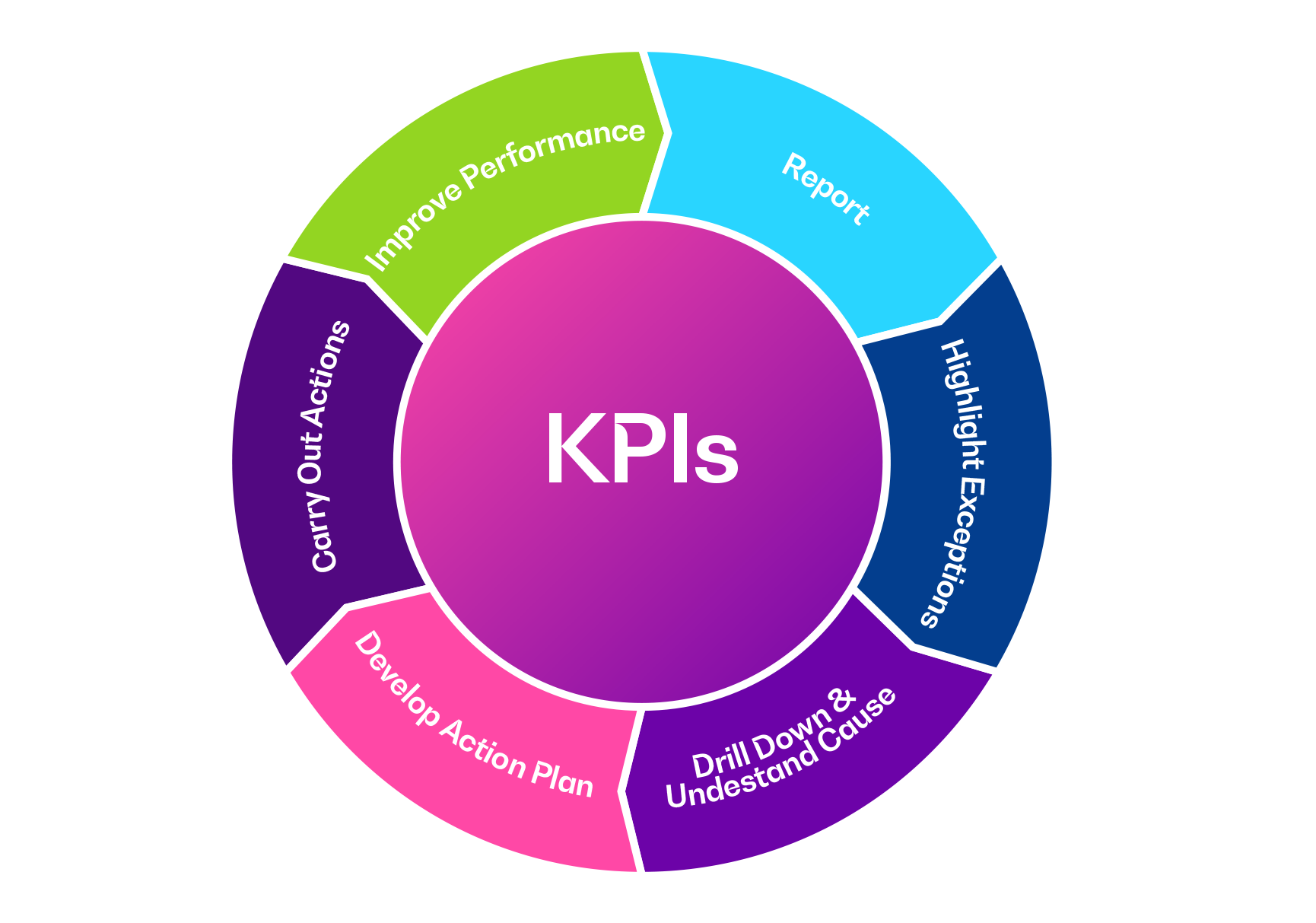Key Exceptions
The process of Managing by Exception identifies the key exceptions, first from the KPIs, then supporting data to understand possible causes. This cycle should be used regularly as an aid to understanding and managing team performance.
The key steps are:
- Identify the exceptions from the report. It is often worth marking the report up to show the exceptions visually.
- Drill down and understand the causes. Use data to provide more detail on possible causes of the exceptions that the KPIs reflect. It is important to verify the possible causes by speaking to the team or gathering more evidence to support the KPIs.
- Develop action plans. Agree and record action points to address the exceptions
- Carry out the actions which must be completed to a set timescale. The team will only improve when the actions from the exceptions are completed.
- Improve performance. The final step is to review team performance again at a suitable interval, to verify that the previous actions have been successful, and identify new exceptions to support continuous improvement.
Report Interpretation
When managing by exception, operating reports are a key feature in managing the effective performance of individuals, teams and sites.
However good the reports are their usefulness is dependent on intelligent interpretation of the information, and particularly the actions that are driven by those interpretations and the performance exceptions identified either positive or negative.
Report Accuracy
In an ideal world all performance reports would always be 100% accurate, but in reality this is very hard to achieve due to the complexities of modern organisations and their processes. However, even when a report is only 80% to 90% accurate, the probability is high that the exceptions will be the same, even though the actual numbers are not 100% accurate.
The reason for a Team Leaders reviewing a report of their team’s performance is primarily to improve that performance. This can be achieved through actions prompted from the exceptions, and as most actions require confirmation or investigating in more detail by discussion with the team, the impact of an inaccurate report can be very easily minimised. Exception management concentrates on the significantly above and below-average performers and, in simple terms, will seek to spread good practice from the best whilst enabling significant improvement by the weakest.
Report Hierarchy
There are three levels of reports in the model of good practice below. In effect, the Team Leaders and Line Mangers weekly reports are the same as they contain the same data which is used differently by each audience.
| Data Required | Advisor Level | Team Level | Dashboards |
|---|---|---|---|
| Weekly Meeting | Coaching | Team Performance Review | Team Overview |
| Attendees | Advisor and Team Leader | Team Leader and Advisor | Lien Manager and Ops Leads |
| Level | One to One | With Team | With Superiors |



